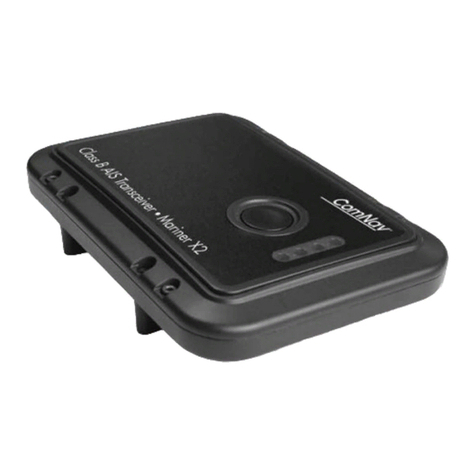1 Notices .............................................................................. 1
1.1 Safety warnings.................................................................. 1
1.2 General notices .................................................................. 1
2 About your AIS class B transceiver ............................... 4
2.1 About AIS ........................................................................... 4
2.2 Static and dynamic vessel data.......................................... 4
2.3 Important information for US customers............................. 5
2.4 What's in the box? .............................................................. 6
3 Installation ...................................................................... 10
3.1 Preparing for Installation .................................................. 10
3.2 Installation procedures ..................................................... 12
4 Configuring your AIS transceiver ................................. 23
4.1 Switching on your AIS transceiver for the first time.......... 23
4.2 Configuring your AIS transceiver...................................... 23
4.3 Introduction to proAIS2..................................................... 24
4.4 Installing proAIS2 ............................................................. 24
4.5 Configuration using proAIS2 ............................................ 24
5 Operation ........................................................................ 25
5.1 Using the AIS transceiver................................................. 25
5.2 Switch functions ............................................................... 25
5.3 Using proAIS2 with your AIS transceiver ......................... 25
5.4 Indicator functions ............................................................ 26
6 Troubleshooting ............................................................. 28
7 Specifications ................................................................. 29
Figure 1 Items included with the product............................ 6
Figure 2 AIS transceiver overview...................................... 8
Figure 3 Electrical connections to the AIS transceiver ....... 9
Figure 4 Typical installation configuration ........................ 10
Figure 5 AIS transceiver dimensions................................ 13
Figure 6 AIS transceiver mounting ................................... 14
Figure 7 GPS antenna mounting...................................... 15
Figure 8 Position of the GPS antenna connector ............. 16
Figure 9 Position of the VHF antenna connector ............. 17
Figure 10 Connecting an external switch ........................... 19
Figure 11 Connecting to the NMEA0183 data port ............ 20
Figure 12 Connecting the power supply.............................22
Figure 13 Indicator functions .............................................. 23
Figure 14 Indicator location on the AIS transceiver unit..... 26
Table of contents Table of figures




























